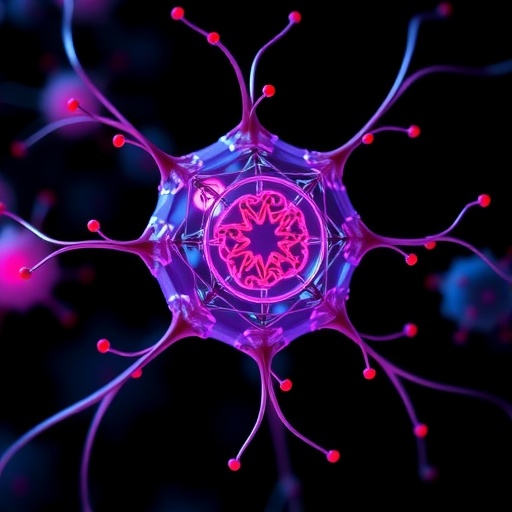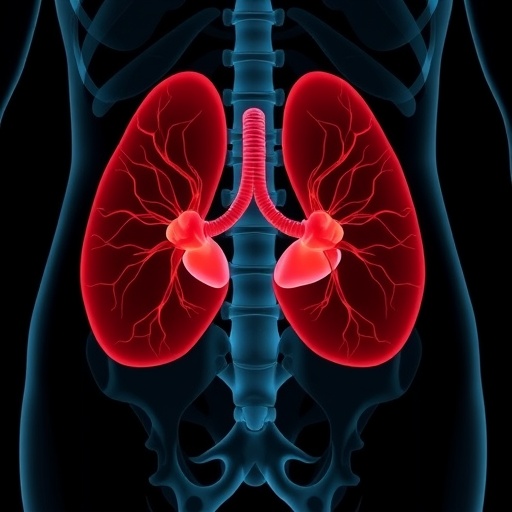In a groundbreaking development that promises to revolutionize our understanding of cellular aging and longevity, researchers have unveiled a novel framework termed “Cell Annealing,” offering a phenomenological model that could pave the way for escaping the traditional constraints of aging. This study, led by Memczak, Izpisua Belmonte, and Graepel, has been published in Cell Research, capturing the imagination of gerontologists and biotechnologists alike. By drawing parallels between principles from materials science and biological systems, the model proposes a method of cellular rejuvenation that could potentially reset or reverse age-associated cellular damage, thus extending both lifespan and healthspan.
A key insight from Memczak and colleagues is their integration of biological complexity with thermodynamic principles. Aging is traditionally viewed as a decline in cellular robustness due to the accumulation of damage in DNA, proteins, lipids, and organelles. Their Cell Annealing model reframes this process as one susceptible not only to inevitable degradation but also to cyclical restoration. Controlled perturbations, similar to thermal inputs in metallurgical annealing, prompt cellular quality control mechanisms such as proteostasis networks, DNA repair pathways, and autophagic clearance to enter heightened states of activity. These cyclical activations allow the cells to “prune” away dysfunctional components, promote molecular chaperoning, and rebalance metabolic flux—all of which contribute to sustained cellular functionality.
.adsslot_Y0OPJKamy1{ width:728px !important; height:90px !important; }
@media (max-width:1199px) { .adsslot_Y0OPJKamy1{ width:468px !important; height:60px !important; } }
@media (max-width:767px) { .adsslot_Y0OPJKamy1{ width:320px !important; height:50px !important; } }
ADVERTISEMENT
This phenomenological approach offers several advantages. Unlike genetic manipulations or pharmacological interventions that often target singular pathways, Cell Annealing encompasses a holistic cellular rewriting. The model’s predictive power lies in its ability to reconcile disparate age-related molecular pathways within a unifying physical paradigm. It leverages known cellular stress responses including hormesis—a process where mild stress enhances resilience—to propose a systemic cycling that yields net restorative effects rather than cumulative damage.
The experimental evidence supporting this model was gathered by mimicking annealing cycles in cultured human cells using controlled pulses of mild oxidative stress and transient metabolic inhibition. These perturbations were carefully tuned to avoid permanent damage but sufficient to trigger endogenous repair machinery. Over repeated cycles, cells demonstrated improved mitochondrial function, enhanced DNA repair kinetics, and reduced senescence markers. Intriguingly, single-cell transcriptomic analyses showed a temporal resetting of age-associated gene expression profiles toward a more youthful state after the annealing regimen.
At a molecular level, this restoration appears to be coordinated by oscillations in key signaling nodes such as AMPK, mTOR, and sirtuins, themselves known central regulators of aging and metabolism. The model also underscores the importance of phase separation dynamics—the process by which cells compartmentalize biochemical reactions in membraneless organelles—in mediating the reorganizational events during annealing. By modulating the material states of these condensates, cells dynamically facilitate the segregation and elimination of damaged components.
Beyond cultured cells, the authors speculate that Cell Annealing could be promoted in vivo by carefully orchestrated interventions such as intermittent fasting, hypoxic conditioning, or controlled thermal therapies. These approaches have been independently associated with anti-aging effects, but the new model provides a mechanistic rationale tying their benefits to cyclical annealing-like cellular reprogramming. If realized therapeutically, such dynamic treatments would mark a paradigm shift, moving aging interventions away from static maintenance and toward actively induced rejuvenation cycles.
Importantly, Memczak et al. emphasize that while Cell Annealing departs from purely genetic or pharmacological anti-aging solutions, it remains compatible with them. This suggests a future where combined approaches, layering annealing cycles with precision senolytics, epigenetic modulators, or gene therapies, may synergize to achieve unparalleled gains in healthspan and lifespan extension. It also raises profound questions about the limits of biological plasticity and whether such cyclical restoration can ultimately overcome species-specific aging clocks.
Confronting the intrinsic heterogeneity within tissues and cell populations remains a challenge for practical deployment. The model accounts for this complexity by proposing that the timing, magnitude, and frequency of annealing cycles must be fine-tuned to each cell type’s bioenergetic and stress response profile. For example, stem cells may require different protocols than differentiated somatic cells to maximize rejuvenative outcomes while minimizing oncogenic risks. Understanding these parameters will require interdisciplinary efforts spanning systems biology, physics, and clinical sciences.
Notably, the Cell Annealing framework also intersects with emerging fields such as systems gerontology and bioinformatics. Integrating multi-omics data with predictive computational models enables the mapping of aging trajectories at individual and population levels. This marriage of data science and phenomenology enhances the capacity to simulate potential annealing protocols before in vivo testing, accelerating translational timelines.
Science enthusiasts and the general public alike are captivated by the tantalizing possibility that aging could be turned from a one-way descent into a reversible cycle. However, the authors caution that application in humans necessitates rigorous validation, particularly around safety and long-term effects. While early results are promising, biological systems are enormously complex, and the risk of unintended consequences such as dysregulated cell proliferation or immune dysfunction must be carefully managed.
This conceptual breakthrough resonates with broader philosophical shifts in aging research—from perceiving aging as an inexorable decline to recognizing it as an amenable process where cellular plasticity can be harnessed. Cell Annealing offers a fresh lens through which to view longevity, where time itself becomes a malleable parameter controlled through intelligent modulation of cellular states.
Furthermore, the implications of this model extend into regenerative medicine and chronic disease management. Aging is the principal risk factor for neurodegenerative diseases, cardiovascular pathologies, and cancer. By reshaping the cellular milieu toward youthful functional states, annealing may open avenues for disease prevention and improved recovery from injury, potentially transforming the healthcare landscape.
As the field moves forward, experimentalists will seek to refine the molecular triggers and mechanical forces that underlie annealing cycles, while clinical researchers will explore minimally invasive methods to induce analogous states in patients. Interdisciplinary collaboration will be essential, merging insights from physics, molecular biology, computational modeling, and clinical expertise to realize the full potential of cell annealing as a longevity modality.
In sum, the Cell Annealing model proposed by Memczak and colleagues marks a visionary stride in aging biology, blending theoretical elegance with empirical promise. It challenges long-standing dogmas and offers a roadmap to one day escape the frailty of aging through orchestrated cellular rejuvenation. While challenges persist, the horizon of biomedicine is now illuminated by this innovative concept, inspiring hope that aging may no longer be an immutable fate but a challenge to be met with science and ingenuity.
Subject of Research: Cellular aging and rejuvenation through the phenomenological model of Cell Annealing.
Article Title: Escaping ageing through Cell Annealing—a phenomenological model.
Article References:
Memczak, S., Izpisua Belmonte, J.C. & Graepel, T. Escaping ageing through Cell Annealing—a phenomenological model. Cell Res 35, 535–538 (2025). https://doi.org/10.1038/s41422-025-01138-z
Image Credits: AI Generated
Tags: aging and biotechnologybiological systems and materials scienceCell Annealingcellular aging modelcellular damage repairgerontology breakthroughsHealthspan Extensionlongevity researchmolecular lesions and agingrejuvenation of cellssubcellular entropy reductionthermal perturbations in biology





